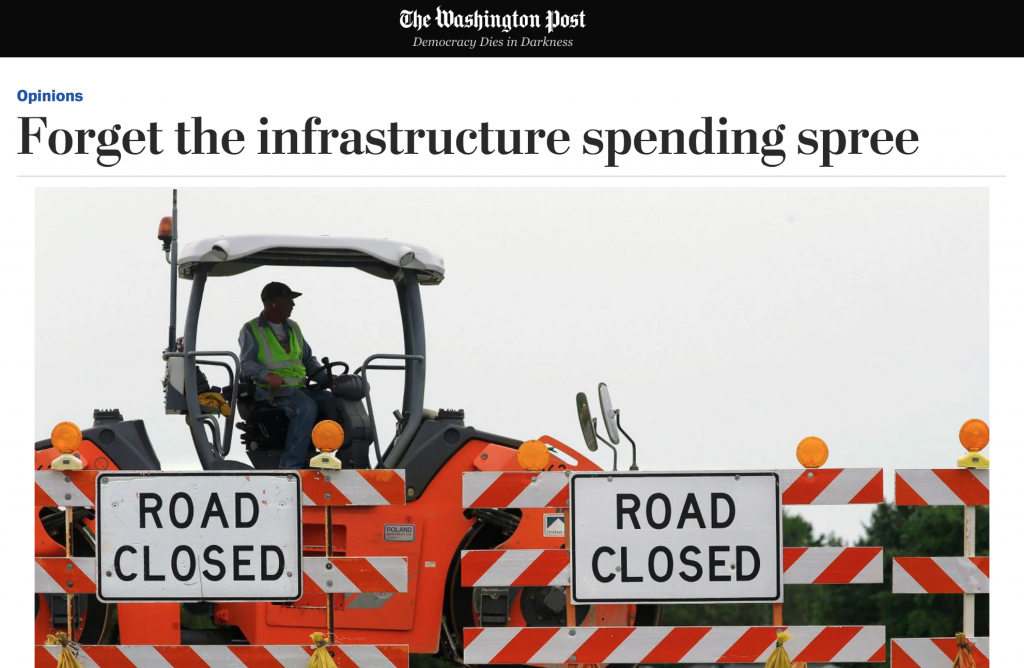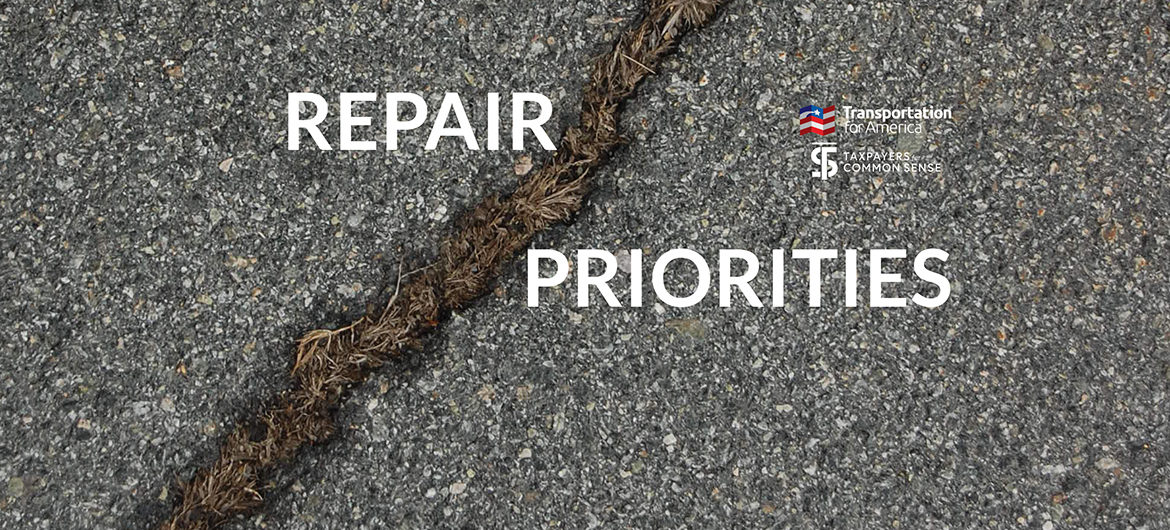Yesterday we unveiled Repair Priorities 2014: Transportation spending strategies to save taxpayer dollars and improve roads. The release featured an online discussion with leaders from Smart Growth America and Taxpayers for Common Sense, as well as state transportation department representatives from Vermont, Michigan and Tennessee. Panelists shared insights and strategies for how states are managing their road repair needs in a time of constrained budgets by using tools like asset management practices; focusing repair investments on the most heavily used roads; setting aggressive targets for pavement conditions; and using cost-benefit analysis to prioritize road investments.
If you were not able to join us for yesterday’s event, an archived recording is now available.
Joining yesterday’s event were Roger Millar, Vice President, Smart Growth America; Steve Ellis, Vice President, Taxpayers for Common Sense; Rich Tetreault, Director of Program Development, Vermont Agency on Transportation, Polly Kent, Administer, Intermodal Policy Division, Michigan Department of Transportation; and Steve Allen, Strategic Transportation Investments Director, Tennessee Department of Transportation.
Thank you to everyone who participated. The event provided valuable insights for how states can improve road conditions for drivers and the financial outlook of America’s DOTs at the same time.







